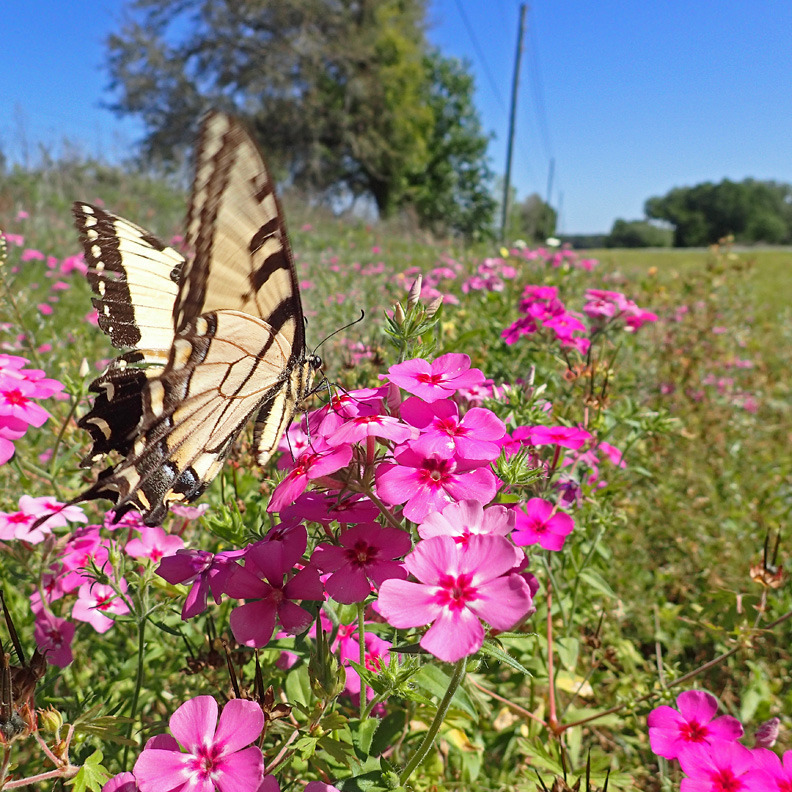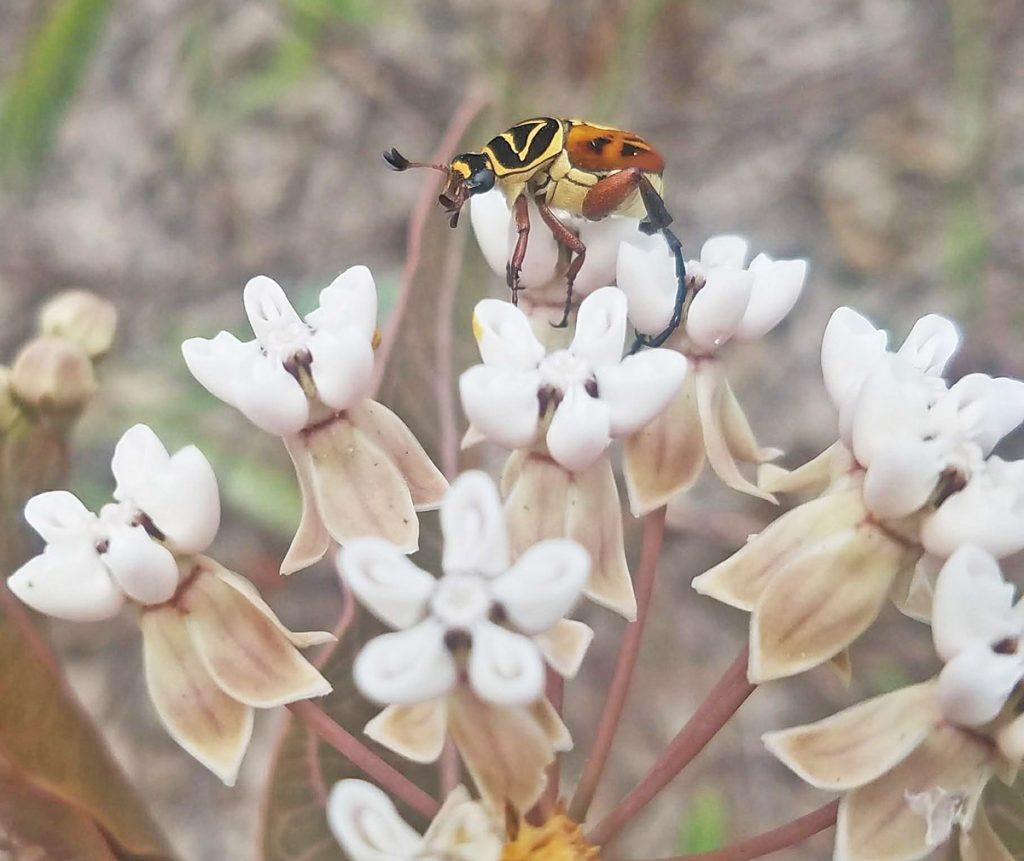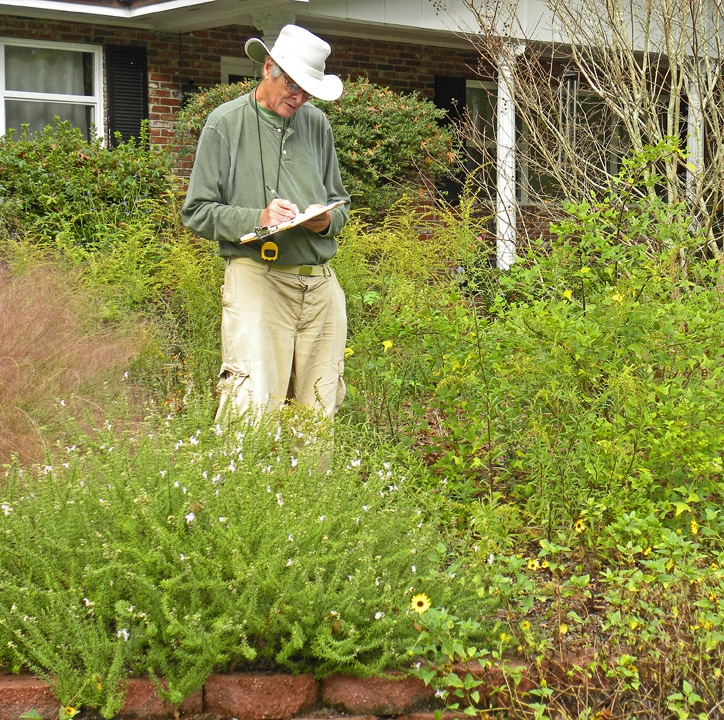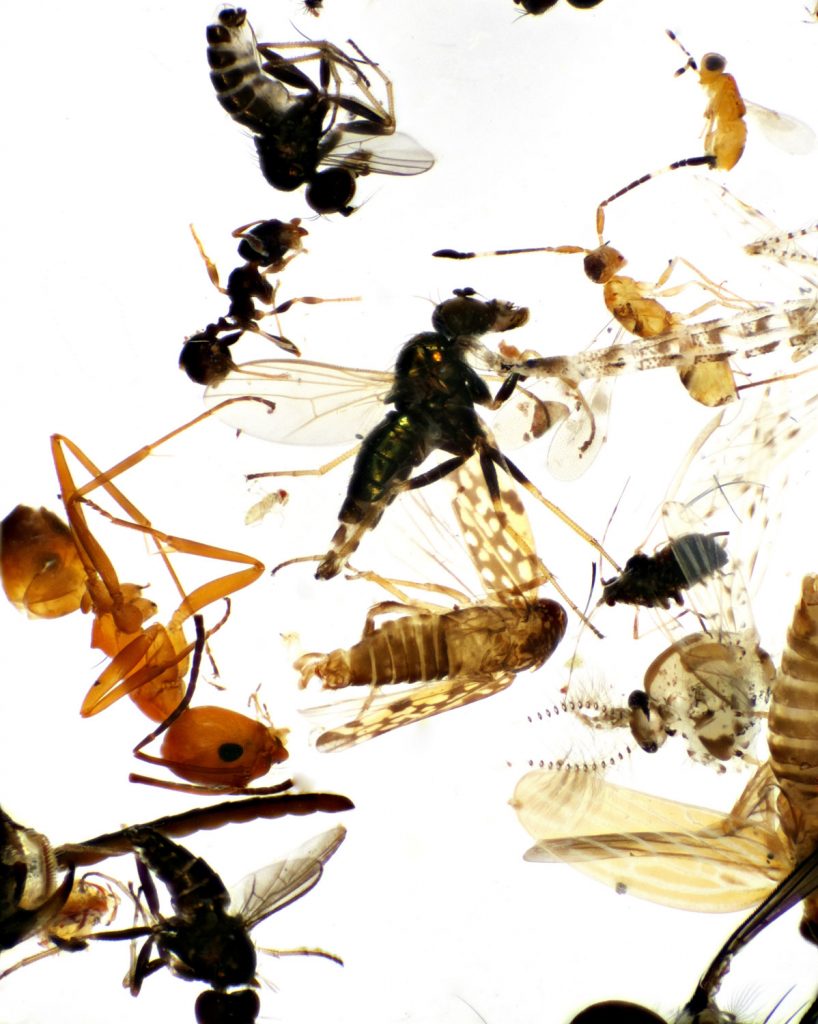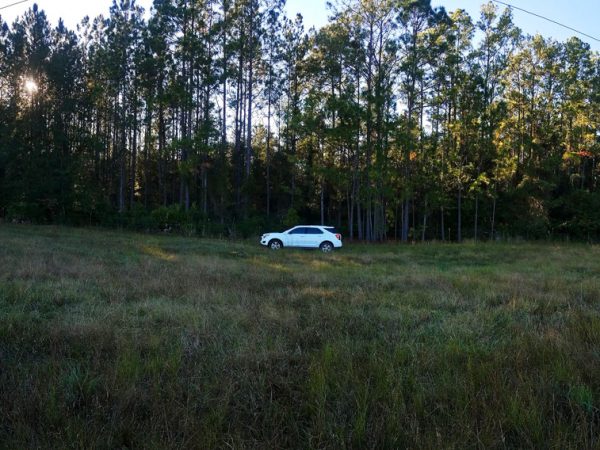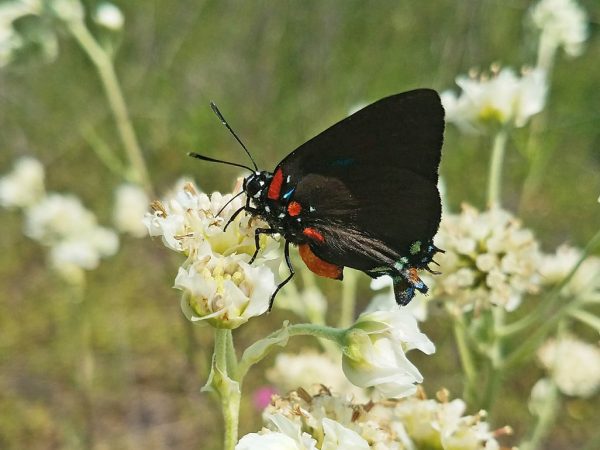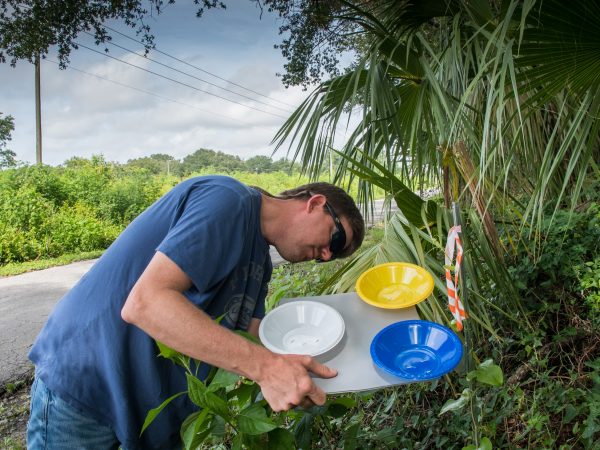Research in the Daniels Lab focuses on areas of managed green space in urban and suburban environments that are often overlooked in the context of conservation efforts, including roadsides, residential yards, and utility rights of way. In recent years, both wild and domesticated insect pollinators have suffered major worldwide declines. Many factors have contributed to these declines, but one of the most damaging appears to be the loss and fragmentation of suitable habitat. Conservation of pristine wild areas is important for preserving our insect biodiversity, but these areas are becoming increasingly fragmented and subject to human disturbance, complicating conservation efforts. While recent attention has focused on protecting insect pollinators in agricultural environments, effective conservation strategies must incorporate the broader environment, including areas that have been heavily modified by urban development.
Roadsides in Florida offer a large network of managed landscapes that could provide resources for native pollinating insects, and we have partnered with the Florida Department of Transportation (FDOT) in an effort to maximize their potential. FDOT is responsible for the management of thousands of miles of roadway across the state, most of which require periodic mowing along the roadside for safety and aesthetic reasons. Our study experimentally modified the frequency of mowing along FDOT maintained roadsides around the Gainesville area and assessed floral and insect diversity at each site. Data analysis is ongoing, but we suspect that a reduced mowing schedule could help to maintain greater floral and insect pollinator diversity in addition to decreasing costs to the state.
Residential areas where most green space consists of more or less landscaped yards also cover significant areas of land and have potential to host insect pollinators if managed appropriately. With the Plant for Wildlife project, we set out to determine what effect the choice of landscaping plants has on the suburban pollinator community. Residential yards in suburban areas around Gainesville were selected as study sites, and landscaping plants were identified and included in one of three categories: native, Florida friendly, or conventional/exotic. Insect pollinators were passively trapped, identified, and counted to measure their diversity and abundance. Based on this data, we will provide recommendations for homeowners to maximize the potential of suburban areas for supporting native pollinators. New research from University of Florida gives homeowners new guidance on how to maximize their landscape’s benefit to insects.
Like roadsides, power line rights of way require some amount of vegetation management to allow maintenance and prevent damage to utility infrastructure. In these rights of way, trees and other woody plants are often removed, allowing the growth of more herbaceous flowering plants and providing floral resources for pollinating insects. In a partnership with Duke Energy, we have now completed the data collection phase of a two year study to quantify the effect this sort of vegetation management has on floral and insect pollinator diversity. This will allow us to make recommendations for future management plans to maximize resources for pollinators in these interconnected rights of way.
